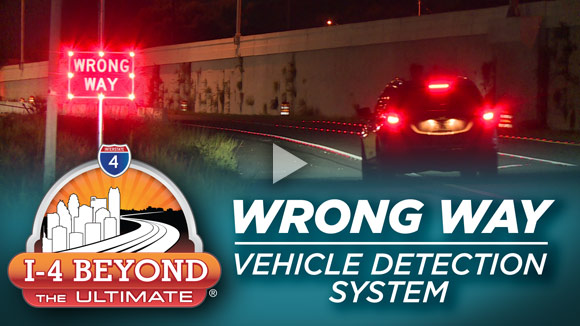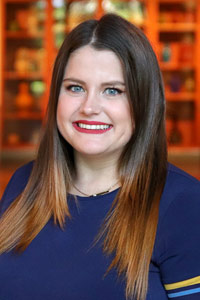|
|
|
With multiple diverging diamond interchanges (DDIs) coming to the Based on available land in the interchange’s footprint, DDIs can provide pedestrian walkways in slightly different ways. For example, new sidewalks at the DDI being constructed at the I-4 and County Road (C.R.) 532 interchange near ChampionsGate are being built along the outside of the DDI. In some DDI designs, the sidewalks follow the path of the DDI — for example, the This style of DDI design has pedestrians crossing traffic at the signal in the designated crosswalk to reach a median and then proceed to the other side of the interchange in an area protected from traffic by a barrier wall. At the other side of the interchange, they simply cross back over at the crosswalk. Bicyclists have the option of riding through the DDI in designated bike lanes or they can walk their bike through the interchange on the pedestrian walkways. Cyclists who opt to ride through the DDI can stay in the designated bike lane alongside traffic and follow the advance signage and pavement markings. When traffic shifts to the left side of the road after the initial traffic signal, cyclists will be on the inside rather than the outside. The bike lane will shift back to the outside after the second traffic signal when traffic returns to the right side of the roadway. By following signage and pavement markings, pedestrians and cyclists can move through a DDI safely and easily. |
At first, it might not seem clear how a college degree in art history prepares people for dealing with highway construction. The two fields – artistic creation and construction administration – seem worlds apart. But about 18 months ago, Katie Deese saw the parallels immediately. It was right after the “I grew up in this business,” said Deese, who is now an Associate Contract Support Specialist with the Construction Engineering & Inspection (CEI) team for I-4 Beyond the Ultimate’s project at ChampionsGate. “When my father and I would drive up and down roads in Polk County, he would say, ‘I built this, and I helped build that.’” She learned, too, how those new or improved roads increased traffic safety for the traveling public. So, when she began documenting some of the construction work on the Studying art history at the University of Florida taught her to be alert to minute details and to appreciate the methods and materials used to create “Although I knew a lot about the construction business, I didn’t know the contracts and detailed plans behind it all,” Deese said. “But I like learning something new. During the past year and a half, she learned to work with subcontractors and process sublets, and to process monthly and final progress estimates, supplemental agreements, and work orders. She even caught some inconsistencies in her project's asphalt documentation. For instance, she assisted in revising the quality control roadway report. “We have to make sure the project's as-builts matches the description of the conditions we encounter in the field.” For example, if an unforeseen drainage issue requires extra underground piping for proper drainage, then it must be documented in detail. “We have to leave a record, so if 10 years from now someone digs there, they will know Today, Deese also is enjoying doing her part in continuing the family tradition. Her father works as a Senior Project Administrator at the same company. Her grandfather had his own paving company in Polk County. Construction was so much a part of family life that holidays at her grandparents’ house might include a ride in the bucket of a front-end loader. These days, her sister owns her own natural gas and underground utilities business and Deese’s fiancé works in the CEI field as well. Deese also likes the strong parallel she found between her family’s third generation in construction and the philosophy behind her new company’s training goals. “We’re not just building roads,” she says. “We’re building the future of the roadbuilding business.” |
|
|
||||||
|---|---|---|---|---|---|---|---|
|
|||||||
|
|||||||








